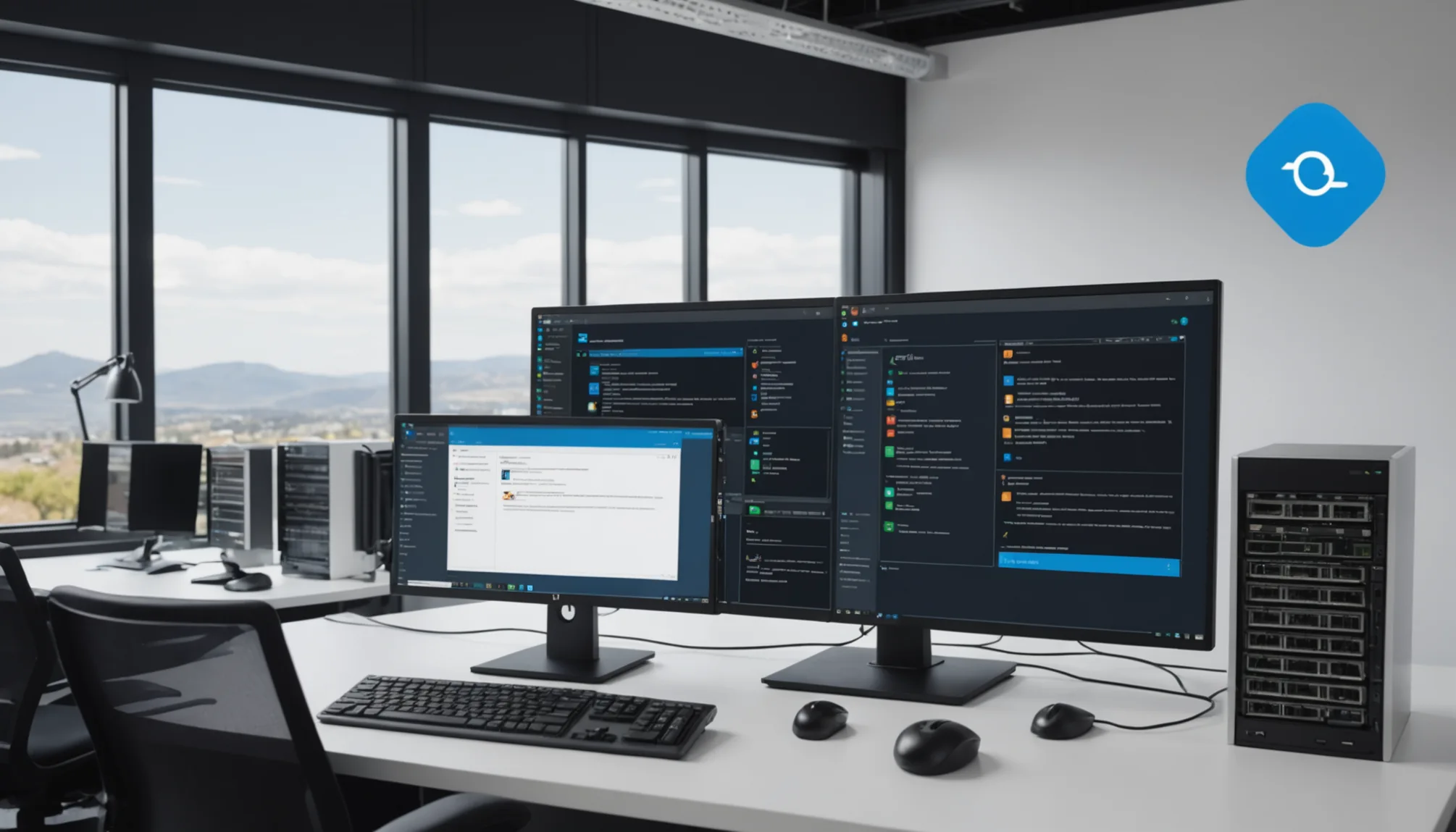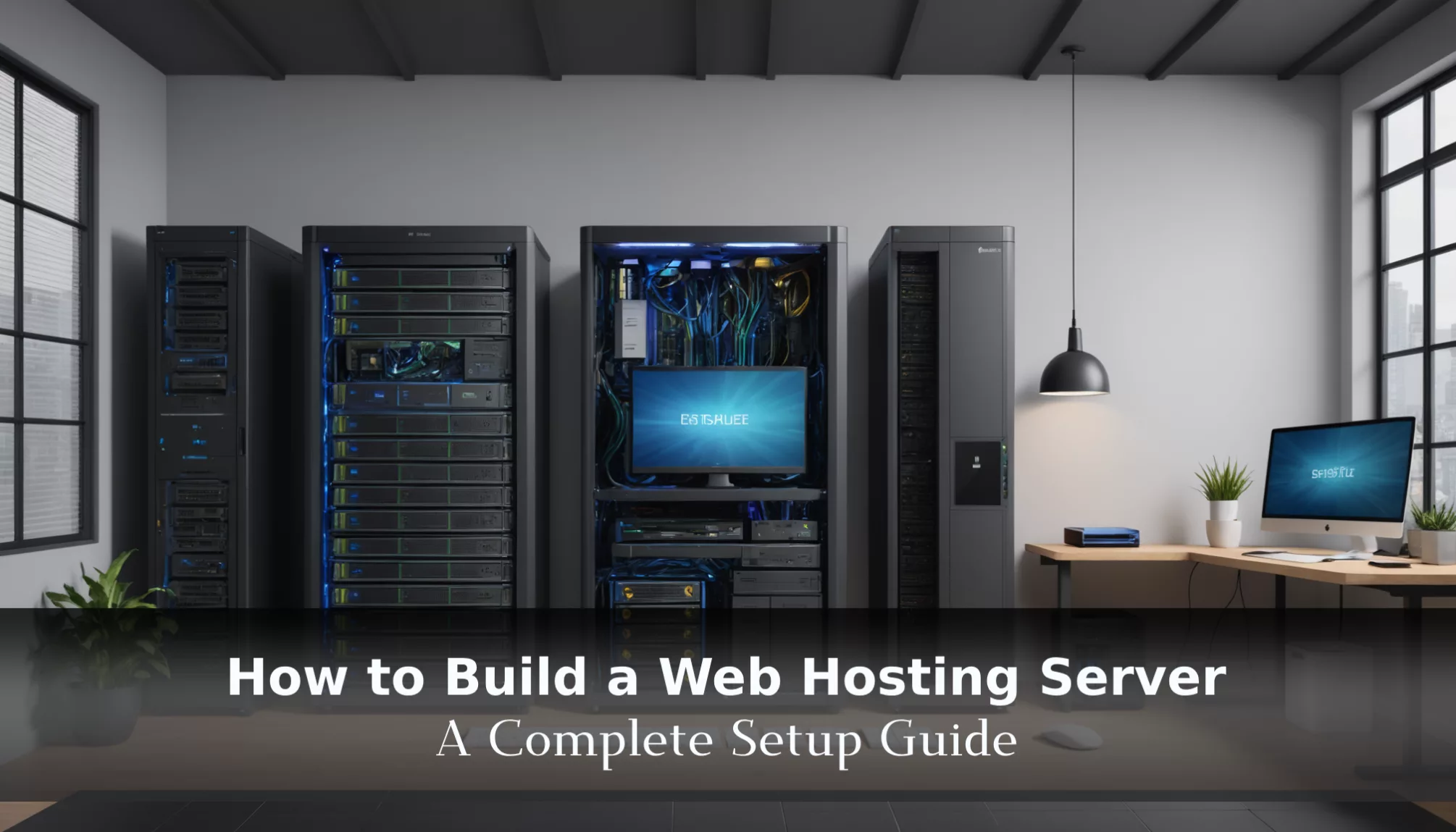Ever thought about running your own website from home? Learning how to build a web hosting server not only lets you do just that, but it also gives you a chance to be in control of your online space! Imagine having your very own server where you can upload cool content, host your favorite games, or even share your creative projects with the world. This skill is super important because it helps you understand how websites function and can save you money if you don’t want to pay for hosting services.
But wait—if you don’t get this right, your website could become slow, or worse, it might not even work at all! In this article, we’ll break down the steps for setting up your server, choosing the right hardware, and picking the best operating system. Plus, we’ll cover some common issues you might face along the way. Ready to dive in and become a web hosting whiz? Let’s get started!
How to Build a Web Hosting Server at Home

Building a web hosting server at home may seem challenging, but with the right guidance, it’s achievable. This section outlines the essential steps to set up your server, select the appropriate hardware, and choose the best operating system.
Steps to Setup Your Web Server
- Choose a Hosting Type: Decide between shared, dedicated, or cloud hosting. Shared hosting is budget-friendly for small sites. Dedicated hosting offers more power for bigger sites. Cloud hosting is flexible, making it ideal for growing businesses.
- Select Server Hardware: Choose between a physical server or a virtual server on an existing computer. Your hardware must handle expected traffic. It should include a strong processor, at least 4 GB of RAM, and SSD storage for speed.
- Install Web Server Software: Install software like Apache, Nginx, or Microsoft IIS. These programs process user requests for your website. Follow the given steps for the software you pick to ensure proper installation.
Choosing the Right Server Hardware
- Physical vs. Virtual Servers: A physical server is a separate machine solely for hosting. A virtual server uses software to run multiple servers on one machine. If on a tight budget, an old PC can act as a virtual server.
- Specifications: Aim for a dual-core CPU, 4-8 GB of RAM, and at least 60 GB of storage. An 8-port gigabit switch can help manage connections effectively.
Operating System Options for Your Web Hosting Server
- Linux: Known for its security and stability, Linux is popular in web hosting. Versions like Ubuntu Server and CentOS are common. It’s open-source, meaning free to use with community support.
- Windows: Windows Server is user-friendly and works well with business software. It’s a good choice if you prefer a familiar interface.
- Choosing an OS: Your choice depends on the software you need. For programs like MySQL or PHP, Linux is often better. If you prefer a more familiar setup, Windows may be suitable.
References
Key Components for Web Hosting Setup

Understanding Network Requirements for a Dedicated Server
To set up a web hosting server at home, understanding network needs is essential. A fast internet connection with good upload speed is crucial. This speed ensures smooth access for users visiting the website.
Router configuration is also important. The router should support port forwarding. This allows external users to reach the server. Using a static IP address helps keep the server’s location consistent, preventing access issues.
Finally, firewall settings are key to security. Firewalls protect the server from unauthorized access while allowing legitimate traffic. Configuring the firewall to block unwanted access while permitting needed traffic is vital.
Selecting and Configuring Your Domain Name
A domain name is like an online address for the server. It’s necessary for easy access. The Domain Name System (DNS) translates the domain name into an IP address, guiding browsers to the server.
Choosing a domain name is important. It should be memorable and relevant. Register the name through a trusted registrar to ensure it is unique.
After registration, configure the domain to point to the server’s IP address. This setup is usually done in the registrar’s control panel by adding the correct DNS records.
File Management Solutions for Your Web Server
Organizing files on the web server requires a good file management system. Common file systems are NTFS for Windows and EXT4 for Linux, which manage data storage and access.
Access protocols like FTP and SFTP help manage files securely. These protocols allow uploading and downloading files safely.
Regular backup solutions prevent data loss. Use cloud services or external drives for backups. This ensures data recovery in case of hardware problems, keeping files secure and accessible.
Citations:
Operating Systems for Your Web Hosting Server

Choosing the right operating system for your web hosting server is crucial. It affects how your server works and what software you can use. The two main options are Linux and Windows, each with their own strengths.
Comparing Popular Operating Systems for Web Hosting
Here’s a quick look at Linux and Windows to help you decide which suits your needs best.
| Feature | Linux | Windows |
|---|---|---|
| Cost | Free and open-source | Requires licensing fees |
| Stability | Known for high uptime | Generally stable, but can vary |
| Security | Strong security features | Vulnerable to certain attacks |
| User-Friendliness | Requires technical knowledge | More intuitive for beginners |
| Software Compatibility | Supports many programming languages | Best for Microsoft applications |
Linux is favored for its stability, security, and low cost. It is a top choice for developers looking for flexibility. Windows is ideal for those needing Microsoft technologies like ASP.NET and MSSQL. Many hosting providers offer both options, allowing users to choose based on their needs. For more information, visit Wikipedia.
Advantages of Using Windows for Your Server at Home
Windows offers several benefits for a home server:
- User-Friendliness: Its interface is easy to navigate, especially for those familiar with Windows desktops.
- Compatibility: It supports a wide range of applications designed for Windows environments, essential for businesses using Microsoft software.
- Development Tools: Windows provides many tools needed to create websites and applications with Microsoft technologies.
These features make Windows a good choice for home servers, especially for users without extensive technical skills.
Setting Up a Linux-Based Web Server
Setting up a Linux server is a flexible and cost-effective solution. Follow these steps:
- Choose a Linux Distribution: Options include Ubuntu, CentOS, and Debian. Each has unique strengths.
- Install the LAMP Stack: This includes Linux, Apache, MySQL, and PHP, essential for running most websites.
- Configure the Server: Use command line for settings. It requires some technical knowledge but many guides are available.
- Secure the Server: Use firewalls and regular updates to protect against threats.
While setting up Linux can be complex, it offers customization and no licensing fees. Linux servers are reliable and great for high-traffic sites. Both Linux and Windows have unique advantages, and the choice depends on your needs and skills. Understanding these options helps you build a web hosting server that fits your requirements.
Common Issues You Encounter When Building a Server

Creating a web hosting server can be rewarding but also presents challenges. This section explains how to handle network issues, manage files, and follow best practices to ensure a smooth setup.
Troubleshooting Network Issues on Your Web Server
Network problems are common when setting up a hosting server. Configuring network components like routers and firewalls correctly is crucial. Here are some key steps:
- Network Configuration: Incorrect settings can block access. Ensure port forwarding is set for web traffic (HTTP/HTTPS) to make the server accessible online.
- Diagnosing Connectivity Problems: If the server isn’t accessible, use tools like ping and traceroute to find connection issues. Make sure the server software, like Apache or Nginx, is running properly.
- Common Symptoms: Users might see timeouts or can’t connect. Check firewall settings and confirm the server’s IP isn’t blocked to solve these problems.
Following these steps can enhance server connectivity and performance.
Solutions for File Management Problems
Proper file management is crucial for a web server. Issues often arise from incorrect permissions or lack of backups. Here are solutions:
- File Access Permissions: Set correct permissions for uploaded files. Wrong settings can lead to 404 errors. Use tools like FileZilla to manage permissions effectively.
- Backup Solutions: Regular backups protect against data loss. Tools like rsync or cloud services can automate this process to keep data safe.
- File Management Tools: Software like Commander One helps organize and maintain file structures, ensuring everything is tidy.
Implementing these solutions can prevent common file issues and support server stability.
Best Practices to Avoid Common Hosting Mistakes
Adhering to best practices is key to a reliable server. Consider these tips:
- Regular Updates: Keep the operating system and server software up to date. This prevents security vulnerabilities and performance problems.
- Document Configuration Changes: Record all changes during setup and maintenance. This helps with troubleshooting and maintains consistency.
- Testing Before Deployment: Test the server for performance, security, and functionality before it goes live to ensure everything works correctly.
These practices can help avoid mistakes and improve server reliability.
References
- Web Hosting Evolution: Hosting services became more accessible in the mid-1990s, allowing anyone to host a website without owning servers. Wikipedia.
- Troubleshooting Strategy: Effective troubleshooting uses systematic approaches and logical reasoning to fix issues. Wikipedia.
Expert Recommendations for Hosting Your Website

Case Studies: Successful Web Hosting Setup at Home
Setting up a web hosting server at home can be a successful endeavor for individuals and small businesses. Here are some examples:
- Local Bakery
- A small bakery improved its online presence by setting up a server at home. They used an old computer with a 60 GB hard drive and 8 GB of RAM. Using Apache software, they launched their website, sharing their menu and accepting online orders. This led to a 30% increase in sales.
- Freelance Graphic Designer
- A graphic designer needed to showcase their work online. By repurposing an old laptop, they set up a server using Ubuntu Linux. This allowed them to manage and present their portfolio to clients, saving money on hosting fees.
- Community Forum
- A group of friends wanted to create an online community forum. They used a dedicated server with 1 TB storage and 16 GB RAM. By employing MySQL for database management and a free PHP platform, they successfully launched their forum. This setup also helped them learn about server management.
These cases show how users can create a web server at home with existing hardware and open-source software.
Future Trends in Web Hosting Technology
Web hosting is evolving rapidly. Here are some trends to follow:
- Increased Automation: Automation is making server setup and management easier. This helps users with little technical experience manage their servers efficiently.
- Enhanced Security: As cyber threats grow, hosting providers are enhancing security with better encryption and firewalls.
- Cloud Hosting: Cloud solutions offer scalability and flexibility, letting users adjust resources as needed.
- User-Friendly Interfaces: Hosting services are developing simpler interfaces, making them accessible to users without technical backgrounds.
These trends show that future hosting solutions will be user-friendly, secure, and flexible.
Expert Quotes on Creating a Reliable Web Server
Experts stress the importance of proper setup and maintenance for reliable servers. Here are some insights:
- “Choosing the right hardware is key. A stable server needs enough processing power and memory.” This emphasizes selecting suitable hardware for your website’s needs.
- “Regular updates and backups are vital. They enhance security and ensure data safety.” This highlights the need for ongoing maintenance.
- “Open-source software can lower costs while offering robust functions.” This suggests considering free software like Apache and MySQL.
These insights focus on hardware selection, maintenance, and cost-effective solutions for building a reliable server.
Conclusion
Building your own web hosting server at home can be an exciting adventure! Remember, choosing the right server hardware and understanding network requirements are key steps in getting started. Don’t forget to explore different operating systems like Windows or Linux to see which one suits your needs best.
As you dive into setting up your server, you might encounter a few bumps along the way, but that’s all part of the learning process! Keep experimenting, and soon you’ll be well on your way to creating a powerful web server. Get ready to unleash your creativity and connect with the world!
FAQs
1. What is web hosting?
Web hosting is a service that makes websites available online. It provides the infrastructure needed, like servers and domain management. The main types of hosting are shared, dedicated, and VPS hosting.
2. How do I build a web hosting server at home?
Follow these steps to set up a home web hosting server:
- Choose Hardware: Ensure the computer has enough CPU, RAM, and storage.
- Install an Operating System: Popular options include Linux (Ubuntu, CentOS) or Windows Server.
- Set Up Web Server Software: Use software like Apache or Nginx.
- Configure Network Settings: Set a static IP for easy access.
3. What types of operating systems can I use for my web hosting server?
You can use these operating systems:
- Linux-Based Systems: Known for stability and security, such as Ubuntu Server and CentOS.
- Windows Server: User-friendly for those familiar with Microsoft, ideal for .NET applications.
4. What are common issues when building a server?
Common issues include:
- Network Problems: Connectivity or firewall issues can block access.
- File Management: File permissions or directory issues may affect accessibility.
- Configuration Mistakes: Errors in software or network settings.
5. What is the advantage of using a dedicated web server?
Advantages include:
- Performance: Dedicated resources improve performance.
- Security: Enhanced security as it’s not shared with other sites.
- Customization: Flexibility in configuration and software choice.

